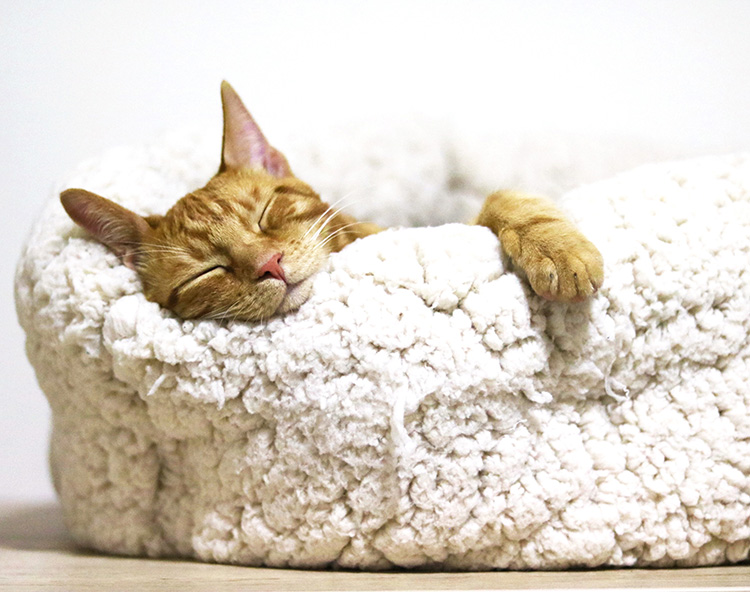New dog
How to help your new friend settle in and start to build a bond
Dogs, Adopters, Dog behaviour

The key resources every cat needs are:
Food and water bowls should be placed as far apart as possible, as cats don't like to drink near where they've eaten. Cats also prefer to drink from a wide shallow water bowl, and they generally don't like plastic bowls.
The litter tray should be placed well away from their food and water, in a quiet and private spot.
Cats find it stressful if key resources are moved around, so it's better to add new resources than move existing ones, at least in the short term.
Cats are VERY prone to stress - even a slight change to their routine or disruption of the scent continuity is enough to really stress them. It's important that nothing is changed once your cat is home and settling in, so don't start moving furniture around or decorating! They will be stressed just moving into your home, so aim to keep things the same for them as much as possible.
Set up a 'base' in a spare or quiet room - a little-used dining room, for example. Keep your cat just in this safe room initially, ensuring they have food, water, litter tray and some enrichment available (such as toys and cardboard boxes).
Allow your cat to come out of the carrier in their own time, and always leave the carrier around for them to use as an extra bed/hidey place. This makes the carrier familiar, and it will be less of a problem when they need to use it to go to the vets.
Assuming your cat is relaxed and confident (and aren't hiding all of the time!), then you can leave the door of the room open so they can come out when they feel ready. Doing this will help to avoid any stress-related behaviours developing, such as inappropriate toileting. They need to build up confidence and feel ready to explore in their own time - don't force them.